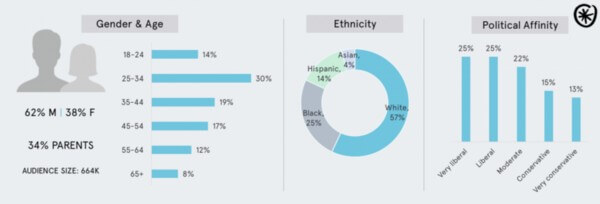As Bitcoin surges past $15k, it’s time we asked: has cryptocurrency gone mainstream?
As we turn toward the finish line of 2017, we look back on a year in which our politics, our news, and many social conventions and institutions - key pillars of our society - have been called into question. Depending on who you listen to (or who you follow), it may seem like another seismic shift is about to shake yet another pillar: our money. The market for cryptocurrency - digital currency exchanged and secured via open-source software - has been growing since 2009, and the value of each Bitcoin recently passed the $15,000 mark. This has made a lot of people sit up and suddenly take interest.
Some are convinced that cryptocurrency is the next great disruptive technology. Others are concerned with speculative behavior in the space and warn of a bubble, though many of these skeptics also concede that crypto may fundamentally change the way we store value, exchange money, and validate transactions in the long-term. What’s clear, though, is that we are nearing an inflection point where cryptocurrency, particularly Bitcoin, will enter the consciousness of the mainstream.
To measure cryptocurrency interest and adoption, we could examine price data, trading volume, market capitalization, hash rate on the bitcoin network, etc. Yet these figures mostly focus on the small sliver of the population who are early adopters in the crypto game. The fringes are already well-documented.
Our curiosity in this case lies with the mainstream, pushing us to take a different approach, analyzing recent social media conversation and audience data: are everyday people actually talking about cryptocurrency? We delved into data around US, English-speaking cryptocurrency conversation to shed light on the buzz and the hype from a completely new angle.
Who’s talking about Bitcoin? It’s not just the tech-bros...
Bitcoin buzz is driven by a diverse audience beyond the young, male, tech community. The stereotype we might imagine of a Bitcoin investor or enthusiast is that of a techie jumping into the next digital trend. But looking at the data of those discussing it online, relative to social media platform user benchmarks, cryptocurrency discussion is actually well distributed across age segments and other demographics. While the social audience does skew male, women are well-represented - over 250K women have posted about cryptocurrency in the last two months. Politically, the social audience leans liberal, suggesting that the libertarian values common among the core crypto community are also reflected in the mainstream audience.
When it comes to questions about Bitcoin and digital currencies, what are people discussing?
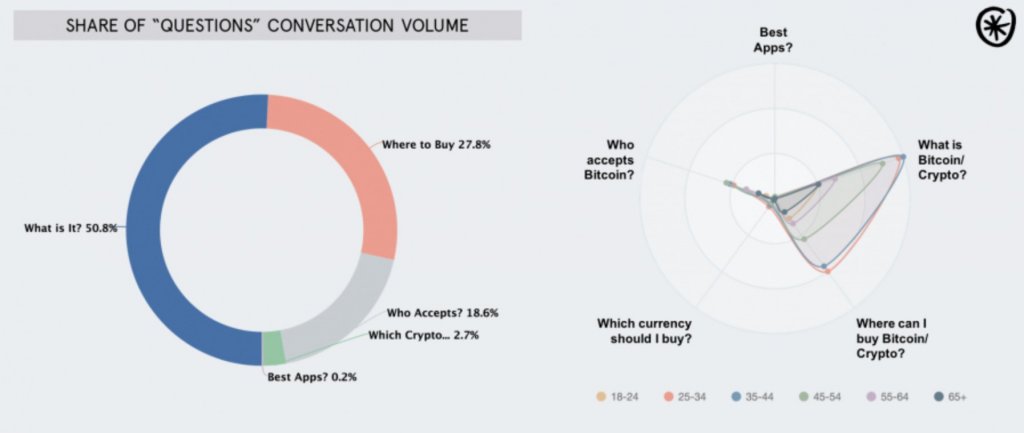
The mainstream is very much still at square one, asking: what is it? Of conversations in which people are asking questions about Bitcoin and other crypto- or digital-currencies, a majority (51%) still seek a basic understanding of what it is. This holds true across all age groups, though people 35-44 years old lead the What is it? conversation. 25-34 year olds show a slight edge in terms of eagerness to invest, leading the Where to buy? conversation. Interestingly, 45-54 year olds drive the Who accepts? conversation, suggesting that this age segment is more likely to judge the legitimacy of a digital currency by the strength of its payment use cases/applications.
What is the focus of the cryptocurrency conversation, and how have perceptions changed over time?
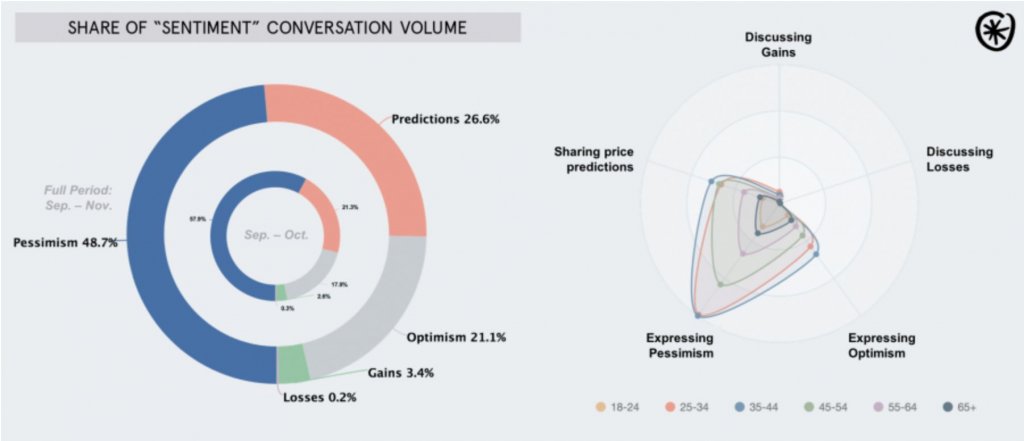
Sentiment tides are shifting as recent conversation shows less skepticism, more optimism. While pessimism still leads the emotional chatter around cryptocurrency, it seems opinions are changing course; since mid-October, pessimism has decreased by more than 10%, while optimism and predictions conversation have grown. The 35+ segment of the audience have driven this shift in perception, becoming notably more optimistic in the last month. This implies a turn away from the skepticism that’s often found in mainstream media conversation about Bitcoin.
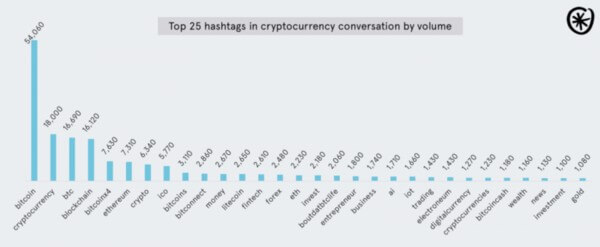
Bitcoin is clearly the brand name carrying the cryptocurrency market forward. Mentions of bitcoin, #bitcoin, and similar terms far outpace generic mentions of the category (cryptocurrency, digital currency, etc) - showing that people like having a brand name to latch onto. Brands are symbols for certain values (freedom, innovation) and help simplify choices in complex markets (What new tech should I consider? Where should I invest my money?). While Bitcoin does dominate the buzz and is leading the race toward high awareness, it’s notable that Ethereum holds a strong spot among the top twenty conversation topics.
So, to what extent does mainstream buzz respond to, or affect, the cryptocurrency market?
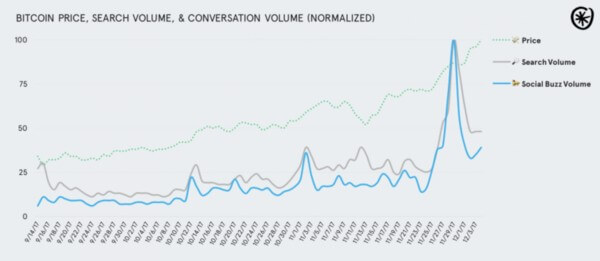
Patterns in social media conversation signal upcoming Bitcoin price movements. One might assume that online cryptocurrency conversation is mostly reactionary, trailing prominent media buzz - but social conversation actually seems to stimulate interest and action in the space. Spikes in conversation volume often precede spikes in search volume by one full day, and Bitcoin price peaks by one to three days. In nearly every case, a rise of 10% or more in social cryptocurrency buzz from one day to the next “predicts” a rise of at least 5% in the price of Bitcoin within three days time. And, over the full period measured, higher social conversation volumes are strongly correlated with higher Bitcoin price levels (r = .76).
It’s clear that Bitcoin, and cryptocurrency generally, is creeping into the mainstream consciousness. While sentiment analysis shows there’s still plenty of skepticism around this relatively new asset class, many social data indicators point toward a more positive outlook: pessimism is on the decline, the topic is reaching an increasingly diverse online audience over time, and rising prices are correlated to conversation momentum. We’ve moved past the point of niche interest and into an early phase of public participation in digital currency; whether that move is feeding a bubble or a healthy market, time will tell.
Read our full report on the mainstream rise of cryptocurrency through the lens of social data today.
